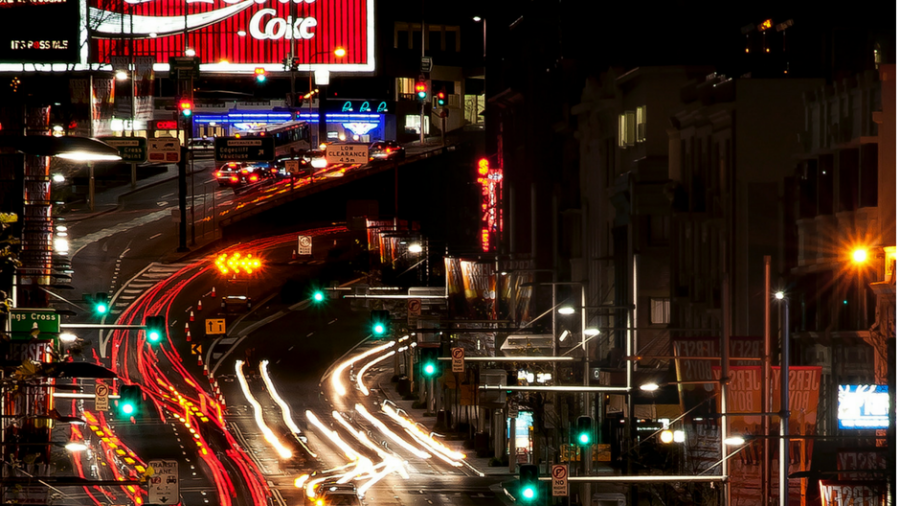Are there too many signs for drivers? It rather depends on who you ask. Road safety advocates think there are too many distractions to motorists inside and outside their vehicles. Driving distracted is particularly dangerous on fast moving highways and in busy, congested cities.
Even so, authorities are using more electronic signage and flashing lights to get driver attention. Advertising billboards are getting bigger and brighter.
QUT study
The Centre for Accident Research and Road Safety at Queensland University of Technology studied how well drivers respond to three signs placed together on a freeway gantry/bridge. They wanted to find out whether putting more than one sign in the same location would confuse them. Would there be too many signs?
Researchers gave 35 drivers a virtual driving task showing three types of sign: directions, variable message, and variable speed limit. In one case, they spread out signs along the highway and, in another, they placed them in the same spot on the bridge.
All drivers easily found their way, travelling at the right speed or responding to an emergency quickly. The study concluded road authorities could reduce construction and maintenance costs by placing road signs together.
Road ads
In 2014, a company called RoadAds proposed to put advertisements on the road in Parramatta. The council were considering a trial. Following opposition from safety advocates including the Minister for Roads, the council abandoned it. Opponents of the trial argued ads on the roads would be too distracting because they would cause drivers to look down.
However, distraction is not quite as simple as that. There is more to seeing than just pointing your eyes in a particular direction.
How we see
While we may look in the direction of something, that does not mean we see it. This is called “inattentional blindness”. The traffic safety literature provides many examples of how inattentional blindness contributes to motor accidents. It even gives it a special name: “looked but failed to see” error.
There are also two different kinds of attention: voluntary and reflexive.
If you choose to look at something, that is voluntary attention. But the environment is full of stimuli that capture attention involuntarily or reflexively. Some stimuli, especially if they are emotive, can impair your ability to see things that appear afterwards.
Billboard distractions
A large owner of billboards across major roads through Sydney boasts about all the “eyes” they capture. But if ads catch the reflexive attention of drivers, they could afterwards influence immediate driving ability. For example, what if reflexively seeing an ad for a luxury car causes you to cut off drivers in luxury cars afterwards?
Meanwhile, visitors driving into Sydney Airport see a plethora of big, bright, digital signs on almost every corner. This is a highly congested area yet drivers could become distracted, particularly as dropping off and picking up loved ones may be emotional. Are there too many signs?
Many attention-grabbing billboards take voluntary driver attention. One survey found nearly a quarter of motorists were so distracted by an ad they accidentally drifted out of their lane.
In Sydney, there is the famous example of the lingerie ad, which eventually had to be taken down. For more on distraction, see our other blog, Distracted driving – what to do about it.


your opinion matters: